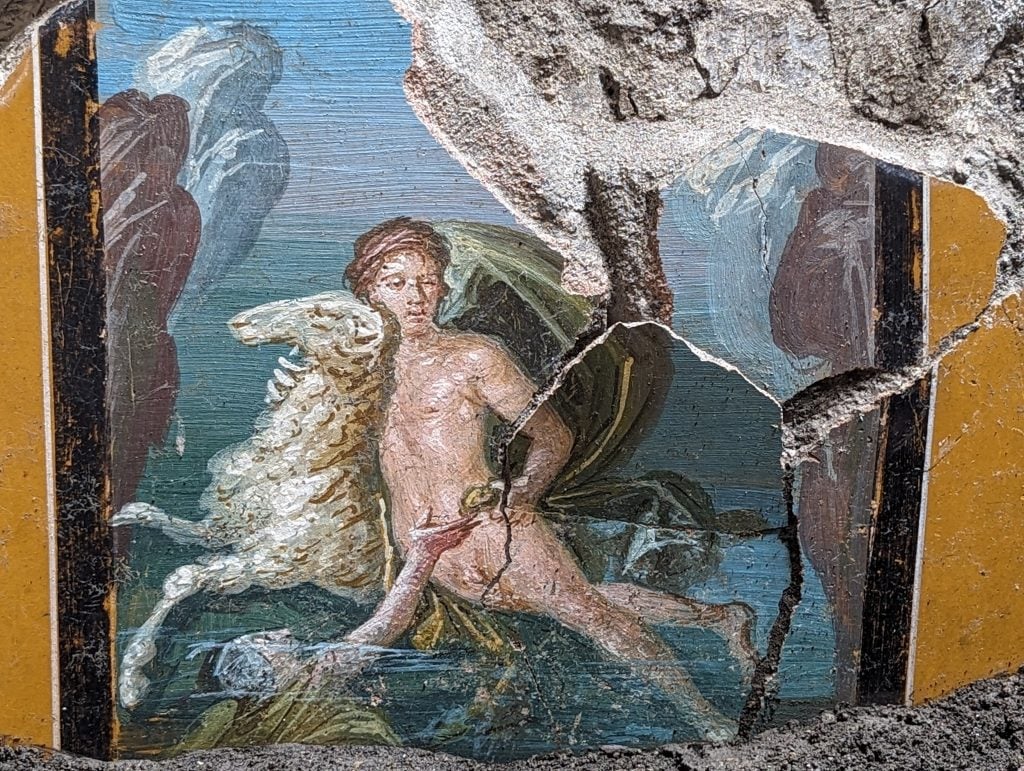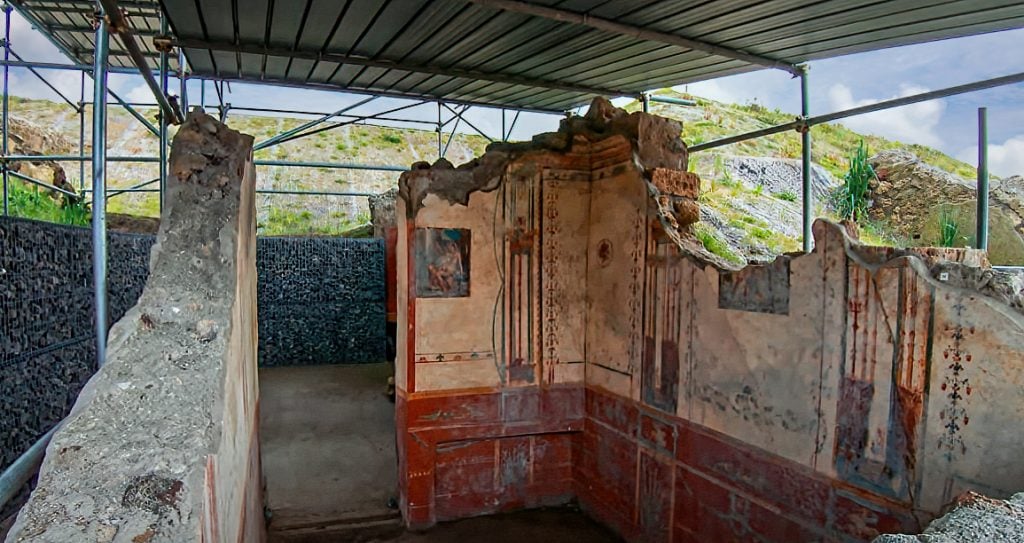Archaeology & History
A Perfectly Preserved Fresco Depicting a Greek Myth Emerges in Pompeii
The fresco's colors are as vibrant as the day they were painted.

Archaeologists have discovered an incredibly well-preserved fresco in the ruins of Pompeii, the Roman town destroyed during the eruption of Mount Vesuvius in 79 C.E. The poster-sized fresco, with colors that appear as vibrant as the day they were painted, depicts the story of Phrixus and Helle, siblings from Greek mythology.
The fresco was found in a domus, an upper class residence, near the House of Leda and the Swan, another onetime residence containing a fresco of Jupiter seducing the queen of Sparta while in animal disguise. Gabriel Zuchtriegel, director of the Pompeii Archeological Park, said it’s possible that the Phrixus and Helle fresco may have been made by the same artist.
In Greek mythology, Phrixus and Helle mount a golden-fleeced ram to escape their evil stepmother, Ino. Helle falls off the ram as it travels from Europe to Asia Minor and drowns in the Dardanelles Strait in Turkey, which in ancient times was known as the Hellespont. Phrixus holds on and arrives in the mythical land of Colchis, where he is taken in by King Aeëtes, the son of Helios.
Speaking to the Guardian, Zuchtriegel noted the story’s parallels to contemporary migrant crises. “History has repeated itself,” he said, explaining that Phrixus and Helle “are two refugees at sea, a brother and sister, forced to flee because their stepmother wants rid of them and she does so with deception and corruption.”

The House of Leda and the Swan at Pompeii. Photo: Mary Harrsch.
The fresco joins a long list of discoveries made at Pompeii in recent years, including ancient kitchenware, a servant’s quarters, as well as a fresco of a flatbread that resembles a pizza (it couldn’t have been, as tomatoes did not arrive in Europe until after the discovery of the Americas). Recently, a carbonized scroll from the town of Herculaneum, also buried beneath volcanic ash, was decoded using artificial intelligence in an open-source competition dubbed the Vesuvius Challenge. The deciphering of the scrolls, however, has worried locals that more digs for further artifacts could ensue.
These discoveries can be partially attributed to UNESCO’s 2013 threats to place Pompeii on its List of World Heritage in Danger, which in turn motivated the Italian government to channel more money and resources into the archaeological site’s preservation and excavation.
The fresco, though well-preserved, is not complete. Large parts of the image are broken off or remain obscured by rubble. Although the archaeological park has yet to reveal a detailed restoration plan, Zuchtriegel said he is hopeful that Phrixus and Helle will soon go on display.





